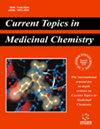A New Advanced Approach: Design and Screening of Affinity Peptide Ligands Using Computer Simulation Techniques
IF 2.9
4区 医学
Q3 CHEMISTRY, MEDICINAL
Current topics in medicinal chemistry
Pub Date : 2024-02-15
DOI:10.2174/0115680266281358240206112605
引用次数: 0
Abstract
Peptides acquire target affinity based on the combination of residues in their sequences and the conformation formed by their flexible folding, an ability that makes them very attractive biomaterials in therapeutic, diagnostic, and assay fields. With the development of computer technology, computer-aided design and screening of affinity peptides has become a more efficient and faster method. This review summarizes successful cases of computer-aided design and screening of affinity peptide ligands in recent years and lists the computer programs and online servers used in the process. In particular, the characteristics of different design and screening methods are summarized and categorized to help researchers choose between different methods. In addition, experimentally validated sequences are listed, and their applications are described, providing directions for the future development and application of computational peptide screening and design.一种新的先进方法:利用计算机模拟技术设计和筛选亲和肽配体
多肽根据其序列中残基的组合和灵活折叠形成的构象获得靶标亲和力,这种能力使其在治疗、诊断和检测领域成为非常有吸引力的生物材料。随着计算机技术的发展,计算机辅助设计和筛选亲和肽已成为一种更高效、更快捷的方法。本综述总结了近年来亲和肽配体计算机辅助设计和筛选的成功案例,并列举了在此过程中使用的计算机程序和在线服务器。特别是对不同设计和筛选方法的特点进行了总结和分类,以帮助研究人员选择不同的方法。此外,还列出了经过实验验证的序列,并介绍了它们的应用,为计算肽筛选和设计的未来发展和应用指明了方向。
本文章由计算机程序翻译,如有差异,请以英文原文为准。
求助全文
约1分钟内获得全文
求助全文
来源期刊
CiteScore
6.40
自引率
2.90%
发文量
186
审稿时长
3-8 weeks
期刊介绍:
Current Topics in Medicinal Chemistry is a forum for the review of areas of keen and topical interest to medicinal chemists and others in the allied disciplines. Each issue is solely devoted to a specific topic, containing six to nine reviews, which provide the reader a comprehensive survey of that area. A Guest Editor who is an expert in the topic under review, will assemble each issue. The scope of Current Topics in Medicinal Chemistry will cover all areas of medicinal chemistry, including current developments in rational drug design, synthetic chemistry, bioorganic chemistry, high-throughput screening, combinatorial chemistry, compound diversity measurements, drug absorption, drug distribution, metabolism, new and emerging drug targets, natural products, pharmacogenomics, and structure-activity relationships. Medicinal chemistry is a rapidly maturing discipline. The study of how structure and function are related is absolutely essential to understanding the molecular basis of life. Current Topics in Medicinal Chemistry aims to contribute to the growth of scientific knowledge and insight, and facilitate the discovery and development of new therapeutic agents to treat debilitating human disorders. The journal is essential for every medicinal chemist who wishes to be kept informed and up-to-date with the latest and most important advances.

 求助内容:
求助内容: 应助结果提醒方式:
应助结果提醒方式:


